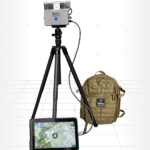The recent Multi-National Network Experiment 3.0 (MNE 3.0) was successful in passing information and firing data between the U.S. and U.K. systems as part of the continual efforts toward more effective communication between coalition partners, officials said. Brig. Gen. Lee Price, Army Future Combat System (FCS) deputy program manager Networks, said in a recent roundtable the experiment was about more than situational awareness. "It's about our ability to do calls for fire and to reach out and touch our coalition…
Contract Updates
UPDATE: Eagle Safe Surfaces Colorado Inc. (Englewood, Colorado (SPE8EC-26-D-0006) – $139,000,000),
UPDATE: Eagle Safe Surfaces Colorado Inc.,* Englewood, Colorado (SPE8EC-26-D-0006, $139,000,000), has been added as an awardee to the multiple award contract for snow removal equipment, issued against solicitation SPE8EC-21-R-0008 and awarded Jan. 20, 2023. The contracting activity is Defense Logistics…
AvKARE LLC (Pulaski, Tennessee) – $12,915,328
AvKARE LLC, Pulaski, Tennessee, has been awarded an estimated $12,915,328 firm-fixed-price requirements contract for telmisartan tablets. This was a competitive acquisition with nine responses received. This is a one-year base contract with four one-year option periods. Locations of performance are…
Bernard Cap LLC (Hialeah, Florida) – $18,857,146
Bernard Cap LLC,* Hialeah, Florida, has been awarded a maximum $18,857,146 firm-fixed-price, indefinite-delivery/indefinite-quantity contract for green service uniform garrison caps. This was a competitive acquisition with six responses received. This is a five-year contract with no option periods. The ordering…
Science Applications International Corp. (Reston, Virginia) – $26,253,706
Science Applications International Corp., Reston, Virginia, has been awarded a $26,253,706 cost-plus-fixed-fee contract in support of Air Force modeling simulation sustainment support. The Air Force modeling and simulation services support (AFMS3) contract provides comprehensive support to the Department of the…













